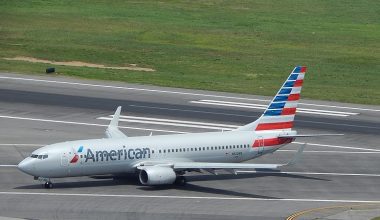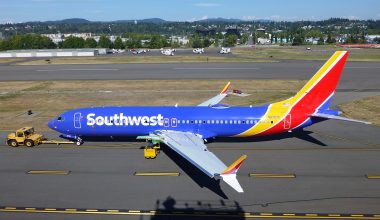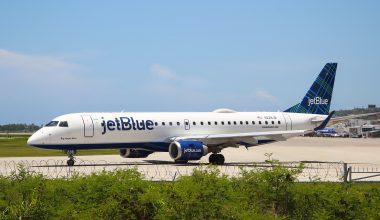Over the last two decades, US commercial aviation has seen plenty of airline merger movements. Delta swallowed Northwest Airlines; US Airways merged with American Airlines; United and Continental Airlines joined forces in an $8.5 billion deal, and the list continues. Southwest Airlines, the world’s largest low-cost carrier, also participated in the merger game during the 2010s. The Dallas-based carrier acquired and closed the chapter on its small rival, AirTran Airways, in 2014. The acquisition was driven by Southwest’s attempt to augment the company’s growth prospects and succeed in an increasingly competitive aviation market.
AirTran Airways was a budget carrier that offered low-cost itineraries for US Midwest and East Coast passengers. At the time of its merger announcement, it flourished and built success on the low-cost business model. The Orlando-based carrier became a part of Southwest Airlines after closing a $1.4 billion deal in 2011. It bid farewell to the skies by operating the final revenue flight on December 2014.

Birth of AirTran Airways
Founded in 1993, AirTran Airways commenced its life as Conquest Sun Airlines under the management of two small carriers. Its relatively modest beginning offered flights to/from Orlando using Boeing 737-200 aircraft.
A year later, AirTran Corporation-the holding company of Mesaba Airlines, purchased Conquest Sun Airlines and changed its name to AirTran Airways. Under the new ownership, AirTran Airways shifted its headquarters to Orlando, Florida, and bolstered its route map. The fleet grew to 11 Boeing 737 aircraft, and the flight network expanded to 24 cities in the Eastern and Midwestern US.
Read More: The short-lived career of low-cost US airline AirTran Airways
Merger with ValuJet
Low-cost upstart AirTran became a subsidiary of ValuJet following the purchase of its parent company Airways Corporation in late 1997. ValuJet, the parent company of Georgia-based ValuJet Airlines, acquired the much smaller AirTran Airways for a reason.
Georgian ULCC ValuJet Airlines had a notorious reputation for safety issues, exacerbated by the high-profile crash of Flight 592. The crash left an irremovable stain on the carrier’s brand, and its deep-pocketed customers never returned.

ValuJet’s management wanted to distance itself from its unsettled past and escape negative publicity. So, ValuJet purchased AirTran and transferred all fleet and operations of struggling ValuJet Airlines to AirTran Airways. The merged entity adopted the AirTran name, an essential move in regaining passenger traffic.
However, even the name change couldn’t stop the AirTran management from receiving media and the general public’s criticism. The reputed Media criticized the act, and the management didn’t put any effort into convincing them.
Turnaround at the turn of the century
In Jan 1999, AirTran took a new turn with the arrival of a new management team. The former Eastern Air Lines veteran Joe Leonard and US Airways’ senior vice president Robert Fornaro led the team and took the reins at the airline. Efforts were made to stabilize the balance sheet, streamline operations, and set up revenue streams. An important aspect of fleet development was the acquisition and operation of the Boeing 717.

AirTran was the launch customer of this American five-abreast single-aisle airliner. The budget carrier became the largest Boeing 717 operator with 88 B717-200 examples.
Into the 20th century

The carrier entered the new millennium cash positive with a considerable operating profit. The first decade of the 20th century was marked by:
- Establishment of a regional brand AirTran JetConnect
- Joining of a new Boeing type, i.e., Boeing 737-700
- Gogo inflight internet fleetwide
- Addition of new routes like Washington, San Francisco, Charleston, Asheville, Harrisburg, etc.
The low-cost carrier led a revolution by outfitting 10% of its fleet with Gogo in-flight broadband internet service. It was the first major airline to offer in-flight Wi-Fi, a modern amenity that allowed passengers to use the internet above the skies. Other carriers soon embraced this service and started offering it onboard passenger aircraft.
In the 2010s
In 2010, AirTrain opened two new crew bases at General Mitchell Airport and Orlando in a gap of 6 months. In September of the same year, Southwest Airlines made a surprise announcement to snap up AirTran for $1.4 billion.
The integration deal was completed in May 2011, and the FAA issued a single AOC for the combined carrier in March 2012. AirTran folded into Southwest and ceased its operations on December 28, 2014. After two decades of successful flight operations, AirTran disappeared from the aviation landscape forever.
Destinations served by AirTran Airways
At its peak, AirTran flew an impressive 700 daily flights to more than 70 cities coast-to-coast and internationally. Over 8,500 crew members were deployed to cater to nearly 25 million annual passengers on domestic and international routes.
AirTran Airlines focused on coast-to-coast hops across the country. The low-cost upstart offered affordable leisure travel to popular tourist spots and smaller cities throughout the US. Beyond the US, it serves customers in Mexico and the Caribbean. Before it’s winding down, AirTran flew domestically to
- Florida (Fort Lauderdale, Fort Myers, Jacksonville, Palm Beach, Pensacola, Key West, Miami, Orlando, Sarasota, and Tampa)
- Illinois (Bloomington, Chicago, and Moline)
- Missouri (Branson, Kansas City, and St. Louis)
- Texas (Dallas/Fort Worth, Houston, and San Antonio)
- Virginia (Newport News, Richmond, and Washington DC)
- New York (Buffalo, Newburgh, New York City, Rochester, and White Plains)
- North Carolina (Charlotte, Raleigh-Durham, Asheville, Akron/Canton)
- Pennsylvania (Allentown, Harrisburg, Philadelphia, and Pittsburgh)
- Michigan (Flint and Grand Rapids), etc.
The Orlando-based LCC used to operate the highest number of daily departures from Atlanta. It used 31 gates to operate 171 daily departures from Hartsfield Jackson to 43 cities (non-stop). Other top-served cities included Orlando (56 daily departures), Baltimore-Washington (47), Milwaukee (30), Indianapolis (20), Fort Myers (19), etc.
Outside the US airspace, the carrier maintained a minimal international presence in the following countries:
- Oranjestad in Aruba
- Nassau in the Bahamas
- Bermuda
- Punta Cana in the Dominican Republic
- Montego Bay in Jamaica
- Cancun in Mexico
- San Juan in Puerto Rico
AirTran fleet
As discussed earlier, AirTran was a massive Boeing 717 operator. Before its acquisition, the AirTrain fleet comprised 88 Boeing 717-200s and 52 Boeing 737-700s.
The twin-engine Boeing 717 could accommodate 117 AirTran passengers in dual-class seating (12 business classes + 105 economy classes). Powered by two Rolls-Royce BR715 engines, the 717 narrow-body could fly at 1,430 miles (2,648km) with a cruise speed of Mach 0.77.
Also Read: US Airways: Why had major American airlines gone out of business?
Similarly, AirTran’s Boeing 737-700Next Generation could seat 137 passengers altogether in a two-class configuration. The aircraft could fly as far as 3,010nmi (5,570km), carrying 12 business class and 125 economy passengers at 0.781 Mach speed.
After AirTran was folded into Southwest, its B717-700 fleet was sold to Delta Air Lines. As for B737-700s, the Dallas LCC giant integrated them into Southwest brand and livery.
Why did Southwest acquire AirTran Airways?
The integration of AirTran Airways was an intelligent move by Southwest to push the competitor out of the picture. Besides, by bulking up, the carrier became well-positioned to adapt to the industry challenges and pose challenges to other established carriers. In contrast to pre-merger fears that the AirTran deal could go wrong, Southwest did a commendable job acquiring the small-budget carrier. The Dallas-based giant airline benefitted from AirTran integration in the following ways:
- Entry into international markets
After both airline companies consummated the $1.4 billion deal, the Southwest brand slowly started spreading across the AirTran business. Low-cost AirTran specializes in operating domestic and international flights to 69 destinations throughout the US and beyond. So, the acquisition gave Southwest Airlines entry into global markets in the Caribbean and Mexico. The low-cost giant airline got instant access to overseas markets and a unique opportunity to fly customers to near-international destinations.
- Enlarged domestic presence
On top of giving Southwest Airlines its first international destinations, the deal also enlarged the carrier’s presence in key domestic markets. With the purchase of AirTran Airways, Southwest got all-important entry into high-value Atlanta and Washington Reason markets.
AirTran had a massive concentration of flights and was the second-largest operator at Hartsfield-Jackson Atlanta. The integration opened the door for Southwest to Atlanta and put pressure on other carriers that ran well-entrenched hubs there. While Southwest absorbed AirTran’s Atlanta operations, it didn’t operate a hub at Hartsfield-Jackson. Rather than running a hub at ATL, it transformed Atlanta operations to rolling schedules similar to the rest of its focus cities.
Besides Atlanta, Southwest Airlines also wedged its way into Washington-Reagan through AirTran. The carrier’s presence at Washington Reagan increased when it secured landing slots vacated by American Airlines-US Airways.
- Strengthened market position
Combining Southwest and AirTran yielded a stronger airline that could compete more effectively with larger network carriers such as American, United, etc. The AirTran-Southwest merger deal strengthened the carrier’s market position and propelled the Dallas-headquartered LCC into mega five US carriers.
Hence, AirTran’s acquisition increased the mega LCC’s depth and breadth in the domestic space. Through AirTran, Southwest received an expanded presence in home markets and a platform for growth in the international arena.






